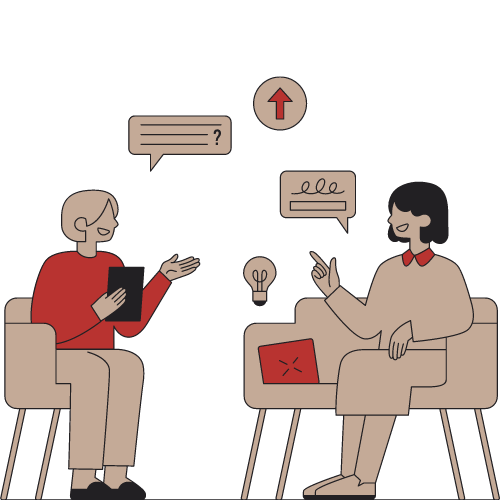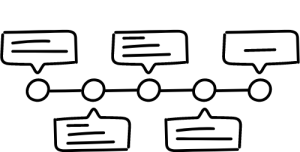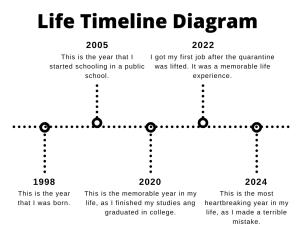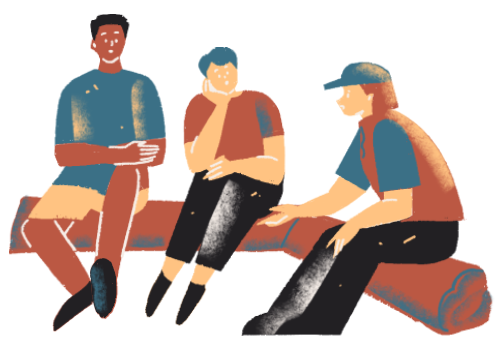8 Advanced – My Life Story
Joehenson Niño Babao
Chapter 3
Learning Objectives
By the end of this chapter, the learners will be able to:
- Demonstrate an advanced level of conversational communication skills by participating in a five-category question interview and sharing their life stories before cell.
- Develop an advanced level of technical communication skills by creating a life story timeline consisting of important life events.
- Exhibit an advanced level of creative communication skills by sharing in the language classroom the story behind your name with a maximum of three minutes of presentation.
Vocabulary
Before jumping into the discussion, the essential terms relevant to the discussion of the topic My Life Story, and the demonstration of the three-course outcomes will be operationally defined to establish a common frame of reference as to how the texts work. You will encounter these terms as we go throughout the discussion. Please refer to these definitions in case you will encounter difficulty in understanding some concepts.
- Life timeline – Life timeline which comes from the word timeline that refers to a listing of important events for successive years within a particular period, is frequently used in history textbooks and biographies because it is a useful tool for explaining what happened to a specific person or during a given period.
- Life Story – a description of the sequence of incidents that comprise a person’s life. Synonyms include life, biography, and life history.
- Family Dynamics – refers to the ways that relatives engage with one another, their responsibilities and connections, and the many ways that these elements influence their interactions.
- Chronological order– the arrangement of events according to the order of time.
- Storytelling – the act of telling a story, sometimes achieved through improvisation, theatrics, or embellishments.
Essential Knowledge
Our life stories are shaped by the compelling stories of our lives. Gayman (2021) stated that stories frequently represent our adversities, victories, and life lessons, strengthening our relationships with others. Some stories that an individual has, might be bitter and sad, and others may have sweet and happy stories. Having either of the two of having the former or the latter may seem to be normal, and we need to consider sharing the good things that happen and overcoming the problems that are in our stories. There are different ways to overcome problems in life, and one of them is the power of sharing your story and letting someone empathize with your situation. There are several ways of sharing stories, an individual can do oral storytelling, visual storytelling, and written storytelling. This can be achieved when answering open-ended questions (e.g., interviews), creating a diagram or an illustration of your story, or even simply sharing some background information about a thing that is related to you. These methods can help you narrate your story to others and let them empathize and know you better.
Activities
At this point, we will have an activity about sharing your life stories with others. Learners will have to be engaged in three activities: an interview or a peer sharing their life story before cell, creating their life timeline, and telling the story behind their names. By completing this section, learners will be able to achieve the three-course outcomes.
Activity 1: Interview / Peer Sharing
Instruction: In the first activity, learners will have to share their life stories in the form of an interview and a peer sharing. The learners will be paired with and will be given questionnaires that consist of five categories of questions. The learners will take turns in answering the questions under the five-category given and they will have thirty seconds to share their answers to every question. Below are the questions under the five categories. By doing this activity, the learners will be able to perform Interpersonal Communication which is a two-way or multi-way communication in which participants can interact.

Guidelines: Here are the guide questions each participant will consider when sharing their life experiences.
| Category | Questions to consider in answering | |
| 1. Early life experience, cultural background, and family dynamics | Q1: What is one unforgettable life experience you had when you were little?
|
|
| 2. Educational and Career Journey. | Q1: What role do you play when you are still studying?
Q2: What is the best part of your previous job?
|
|
| 3. Interest and Passion | Q1: What are the things that you like and the things you love doing the most?
|
|
| 4. Relationships | Q1: How do you show your gratitude to someone who did something good to you or to someone you love?
|
|
| 5. Personal Beliefs and Values | Q1: What is your motto in life and how do you reflect it on your past actions? |
After completing the first activity, you will have to accomplish the next task which is, creating a life timeline. A life timeline is a useful tool to have when starting a life narrative or memoir project. When you start writing a memoir or life story project, a life timeline may be a useful tool since it will not only help you place yourself in time throughout your life but will also highlight significant periods that are probably worth examining. When you write, the timeline will not only help you place yourself in chronological order throughout your life, but it will also draw attention to significant events that you should delve more into Roode (2022). Creating a life timeline is another way of sharing your personal stories with others. Aside from the previous activity that we had, sharing you’re your story can be made possible by presenting it multimodally.
Activity 2: Creating a Life Timeline
Instruction: In this activity, the learner will create their life timeline; by doing so, they will have to follow and consider the following guidelines. By doing this activity, the learners will not only learn how to remember their life stories but will also learn how to list their stories in chronological order. Lastly, learners will experience Presentational Communication, a one-way communication in which a speaker or writer has no way to check for comprehension on the part of listener(s)/reader(s).

Guidelines:
- Think and brainstorm about important happenings and moments in your life.
- List and highlight that important moment that you think to be worthy of including in creating your life timeline.
- Try to remember when it happened (i.e., you may add the date wherever possible or write a short description of when it happened).
- When creating the timeline, the learner has the prerogative to have their design and layout as long as it is written in chronological order.
(To help you more with these guidelines, you may consider the following in creating your life timeline.)
1.Start with major life events
Example:
Your birth
Your spiritual milestone (e.g., Baptism)
Your educational journey
Your relationship events (e.g., marriage)
2.Listing the time you felt emotional in life
Example:
What makes you happy or sad?
What makes you feel alone or not?
Here is an example of a life timeline diagram that the learners can follow.

After completing this activity, you will now perform a presentational communication by telling a story. Below are the instructions and guidelines.
Activity 3: Telling a Story behind your name
Instruction: In this activity, what you will have to do is simply tell a story about your name, in other words, you narrate the reasons why your parents named you your name. Since a name tells a tale all by itself. There are opportunities for reflection and comprehension because of the significance, spelling, history, and folklore associated with our names. The purpose of this activity is to know people better by knowing their names on a more personal and creative level of storytelling. The presentation will be done individually with a maximum of three minutes presentation. By completing this activity, learners will be able to demonstrate Interpretative Communication.

Guidelines: In sharing your story, you may want to consider telling people why it is interesting to hear your story, and you may consider creatively doing this activity. You can also include additional information about your story by sharing your nickname and your full name. Remember, by doing this activity, the goal is not only to let them know the story of your name, but rather, for them to know you better. You may also want to consider the following questions.
- How was your name chosen?
- Were you named after someone?
- Does your name have something to do with your culture or have some historical meaning.
After completing the three sets of activities, let us try to check if you still remember the basic concepts included in the three activities.
Let’s Check!
Key Takeaways
After completing all three activities, we learned that our identities and experiences are shaped by the compelling stories of our lives. Some stories that an individual has, might be bitter and sad, and others may have sweet and happy stories. While we may choose to keep our own stories for ourselves, we may also consider sharing them with others. Upon learning, there are ways of sharing your story and letting someone empathize with your situation. The first thing we can do is to interview in the form of a peer-sharing conversation by which we can consider answering questions related to our lives. We can also illustrate our life stories by creating and presenting a diagram (e.g., a timeline). Lastly, we can share our stories creatively by doing storytelling. These ways of narrating our stories are important for us to demonstrate an advanced level of conversational, technical, and creative communication skills.
